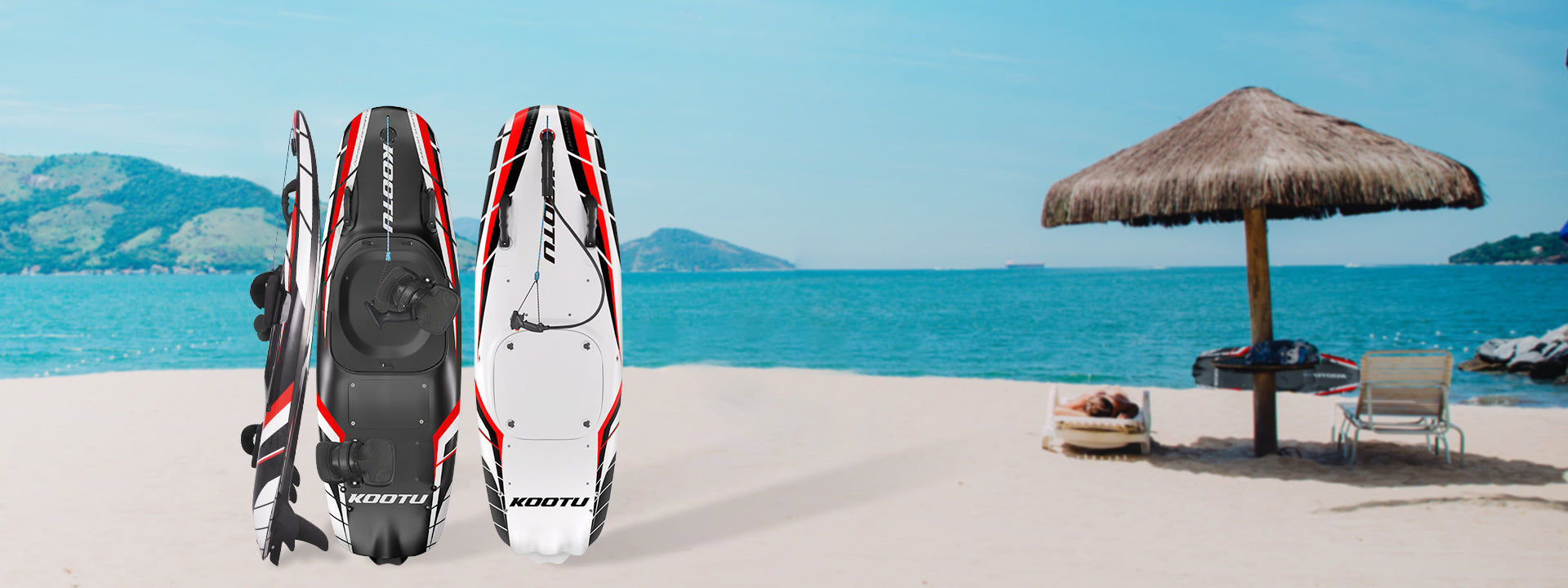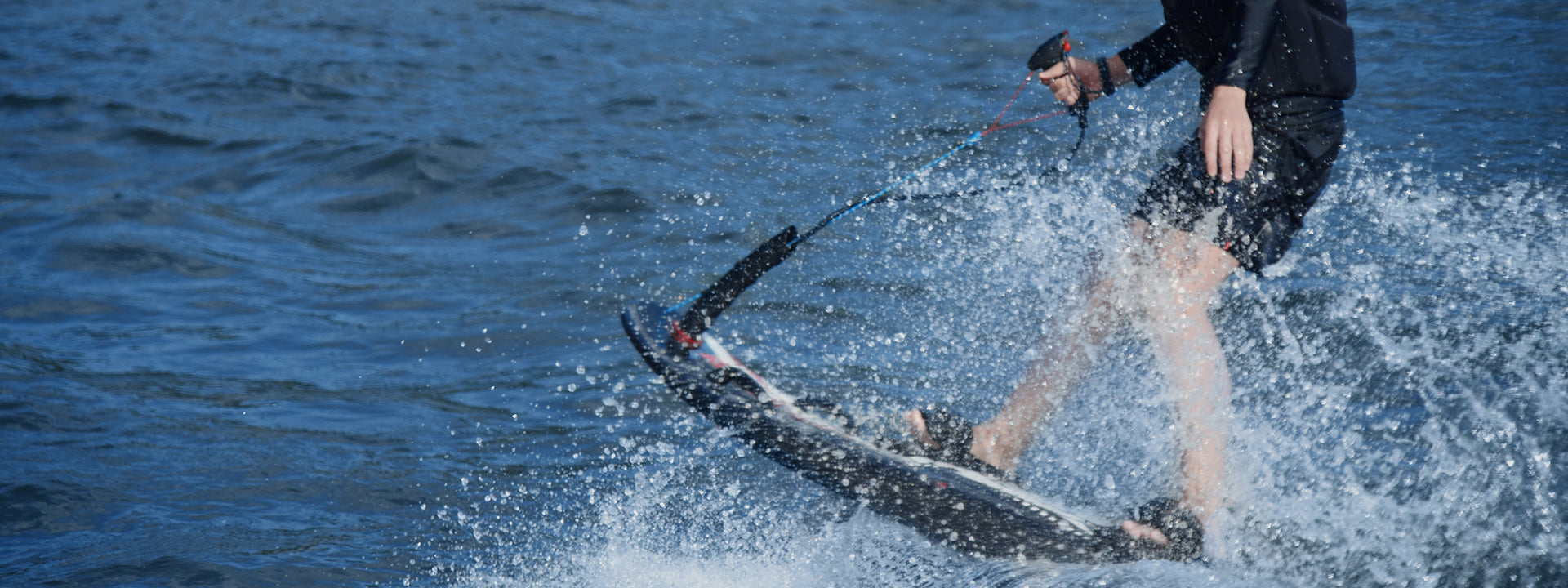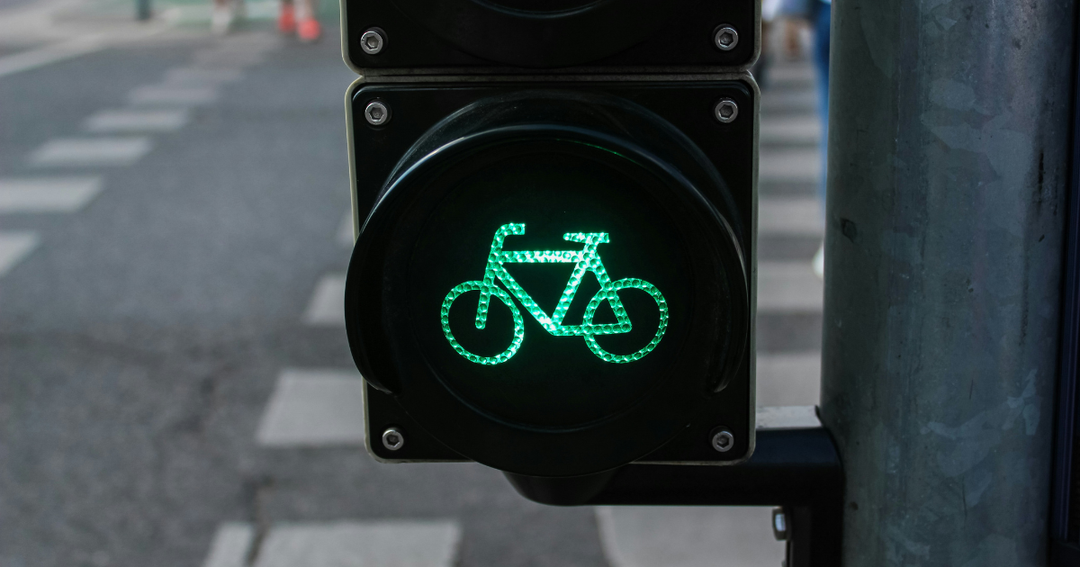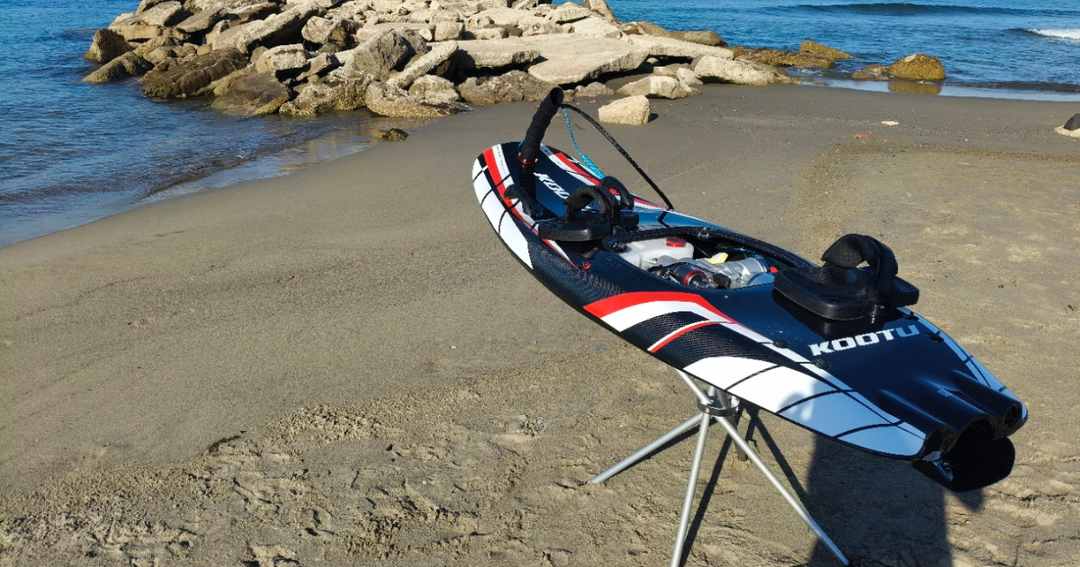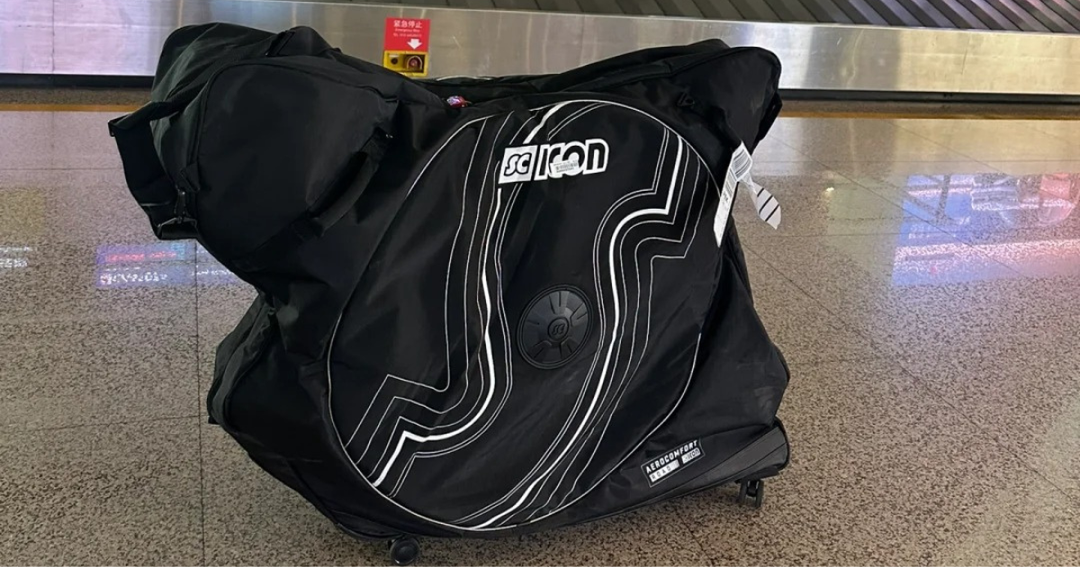Can You Travel with a Gas-Powered Surfboard? Airport Rules Explained
Summer is a great season for offshore adventures, so if you're looking to take your KOOTU Fuel board on a flight to your destination and enjoy the surf, look no further than this guide!
In this post, we’ll break down everything you need to know about traveling with a gas-powered surfboard, from airline regulations and fuel restrictions to shipping alternatives and smart packing tips.

✈️ Are Gas-Powered Surfboards Allowed on Airplanes?
Most airlines and aviation authorities (like the TSA in the U.S. and IATA worldwide) do not allow internal combustion engines or fuel-powered devices with fuel tanks — even if they’re empty — in checked or carry-on luggage.
This includes:
Jetboards with built-in gasoline engines
Any unit with non-removable fuel tanks
Surfboards that still smell of fuel or vapor
Key Point: If your surfboard contains a built-in fuel system, you may not be allowed to bring it on the plane — even if it's been drained and cleaned.
📦 Alternative: Shipping Your Gas Surfboard
Since air travel is restrictive, many jetboard owners opt to ship their gas-powered surfboards separately using freight services. Here’s how:
Best practices for shipping:
Use certified Dangerous Goods shippers that handle “Class 3 Flammable Liquids” (for fuel systems).
Clean and drain all fuel completely — include proof if possible.
Secure your board in a custom crate or heavy-duty case.(KOOTU Fuel Surfboards sells surfboard bags that provide an extra layer of protection.)
Get insurance to protect your high-value item.
Popular options: DHL Freight, FedEx Dangerous Goods, or local freight forwarders.
🧳 What If I Remove the Fuel Tank?
KOOTU fuel surfboards allow you to detach the fuel tank. If you can ship or carry the board without any fuel-related components, it might be treated as a large sporting good — similar to a surfboard or snowboard.
Check with your airline:
Oversized luggage policies
Length/weight limits(KOOTU fuel surfboard package size is 196cm*69cm*29cm. Weight 37kg.)
Handling fees for boards over 150 cm
Tip: Contact airline cargo or sporting goods department ahead of time.
🛑 Fuel Restrictions You Need to Know
Even carrying fuel containers or gas canisters is a red flag at airports.
Forbidden items in most countries:
Fuel tanks with residual gasoline
Portable fuel bottles (even empty ones)
Items marked “flammable” without proper labeling
✅ To be safe:
Never attempt to “hide” or disguise fuel systems.
Always declare gear truthfully during baggage checks.
✅ Final Tips for Traveling with Your Gas-Powered Surfboard
Detach fuel components if possible.
Use freight shipping for longer international trips.
Clean and purge any fuel residue.
Label your gear clearly and insure your shipment.
🏄♂️ Bottom Line: Yes, You Can Travel — With Planning
While you can’t just toss your gas-powered surfboard into a checked bag and head to the airport, you can still bring it along on your next vacation — it just takes more planning. Whether you're surfing the California coast or island hopping in Southeast Asia, a little logistics work will ensure your gear gets there safely and legally.








